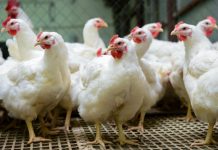MANILA – The Philippines remained one of the fastest growing economies in Asia even after posting slightly slower growth at 6.1 percent in the third quarter, due to weaker agriculture output and “temporary” decline in household spending over an inflation surge.
Socioeconomic Planning secretary Ernesto Pernia said an economic growth of at least 6 percent for 14 consecutive quarters suggests that the country is “now on a higher growth trajectory.”
He said the country’s third-quarter economic growth followed Vietnam’s 7 percent and China’s 6.5 percent, and way ahead of Indonesia’s 5.2 percent.
Pernia said he is optimistic the domestic demand will shift to high gear again in the fourth quarter due to the holiday season, as the government continues addressing upward pressures on prices, especially on food.
He cited the issuance of Administrative Order No. 13 streamlining procedures covering the importation of food products.
“From the previous years, fourth-quarter consumption spending normally picks up quite a bit,” he noted.
Inflation remained at 6.7 percent in October 2018, but eased month-on-month by 0.3 percent since it peaked in August.
National Statistician and Philippine Statistics Authority head Lisa Grace Bersales said “for Metro Manila, inflation is slowing down so we would expect this to encourage more household consumption expenditure at least for Metro Manila.”
Pernia, who is also the National Economic and Development Authority (NEDA) Director General, said the economy would have grown “easily between 6.5 to 7 percent” in July to September if inflation did not increase.
The PSA reported that services had the highest contribution to the overall growth in the third quarter with 4.1 percentage points, followed by industry with 2.1 percentage points.
The agriculture sector, however, pulled down the growth by -0.03 percentage points.
Pernia attributed the weakness of the agricultural sector to the highly-regulated trading regime, and several typhoons that delayed the planting decisions of the farmers.
“As we have been saying, the more robust solution is to reform the legal framework surrounding agricultural development and agricultural trade, especially on rice and sugar,” he said.
Pernia further said the economy needs to expand by at least 7 percent in the fourth quarter to achieve the low-end of the government’s target of 6.5 to 6.9 percent growth rate for 2018.
The GDP accelerated 6.2 percent in the second quarter this year, and 7.2 percent in third quarter in 2017.
“The recent resumption of activities in Boracay (Island) will boost services growth over the medium term,” he added. (With a report from the Philippine News Agency/PN)



